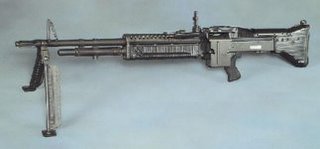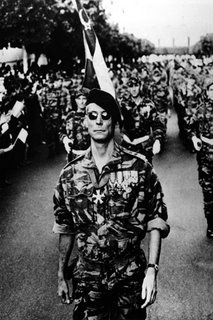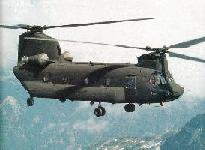Cobra.

This is coolbert:
Having stated in the previous blog that the Huey Cobra gunship allowed the modern soldier in Vietnam to experience from aloft warfare such that, "the nearest thing that contemporary ground warfare can offer to the soldier's concept of the a knight in armour".
I thought it might be interesting to go over in detail the various weapons to be found on the Huey Cobra. The weapons systems that made this helio such a particularly dangerous instrument of war. A weapons systems that is still being used and updated and upgraded even today [Israel and the U.S. Marines in Iraq currently are using Huey Cobras].
The initial version of the Huey cobra as seen in Vietnam was equipped with weapons suitable for the combat American forces found themselves involved in. These weapons included the:
7.62 mm mini-gun. A gatling gun type weapon.

[I have seen film clips of this mini-gun in action. Being used by Israelis against Palestinians. The shell casings being ejected form what appears to be a wispy but dark cloud under the helio, they are so dense. Such is the rate of fire of the 7.62 mm mini-gun!!]
40 mm grenade launcher [firing the same round as currently found in the M209 rifle/grenade launcher]. Initial versions of this launcher were hand cranked. Later versions were automatic.

2.75 inch rockets.

By the end of the Vietnam War, the Huey Cobra was finally equipped with a TOW anti-tank-guided missile [ATGM] (Tube-launched, Optically tracked, Wire command-link ) launcher. This ATGM was effective in destroying with almost impunity North Vietnamese T-55 tanks that made their appearance on the Vietnamese battlefield in profusion.

Subsequent to the end of the Vietnam War, addition improvements were made to the armaments available to the Huey Cobra. These were to include:
20 mm gun. A three barrel gatling gun type weapon.

Zuni five inch rockets. [this is called the "Holy Moses"!!]

Hellfire ATGM missiles. A big improvement over the TOW system. The latter is a wired guided missile, the Hellfire is not.

Stinger missile. An anti-aircraft missile that gave the helio a dogfighting capability!!

[the latter three weapons found on improved Marine versions of the Huey Cobra only??]
In addition, with a weapons system such as the Huey Cobra, a weapons system that has been around for over forty years now, incremental but valuable improvements have been made to the airframe, engine, rotors, avionics, displays, targeting devices, that allow for a much more flexible and effective attack helicopter. A helio in all probability just magnitudes improved over the original versions. This IS cost effective and demonstrates that the armed forces have ingenuity and the wherewithal to do remarkable things when they want to.
I recall seeing a "Sixty Minutes" program some years ago now where the person being interviewed stated that in his opinion the Huey cobra, fully armed, was second in lethality only to atomic weapons in the U.S. arsenal!! This very well could be true. Helios such as the Huey Cobra gunship have the ability to put ordnance right on the target with precision, in abundance, and with great effect, and flexibly too!! A formidable combination!!
coolbert.



























